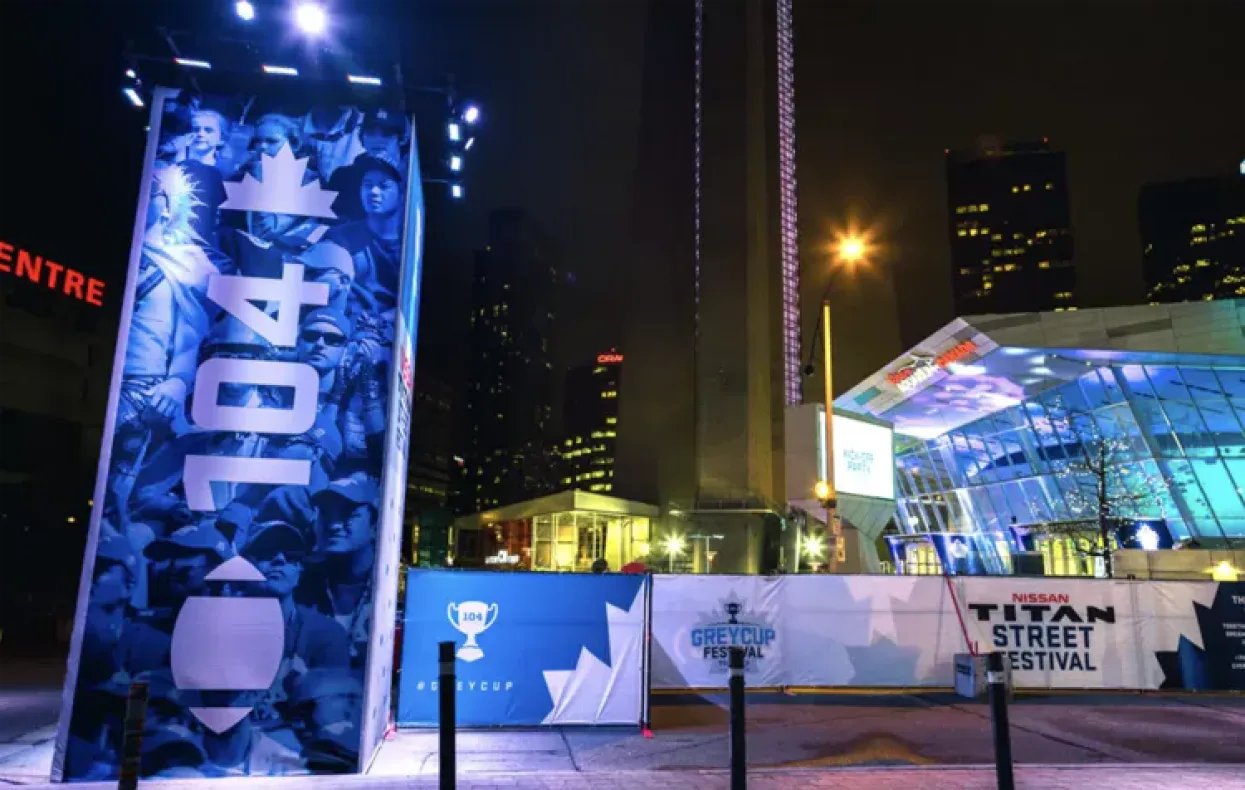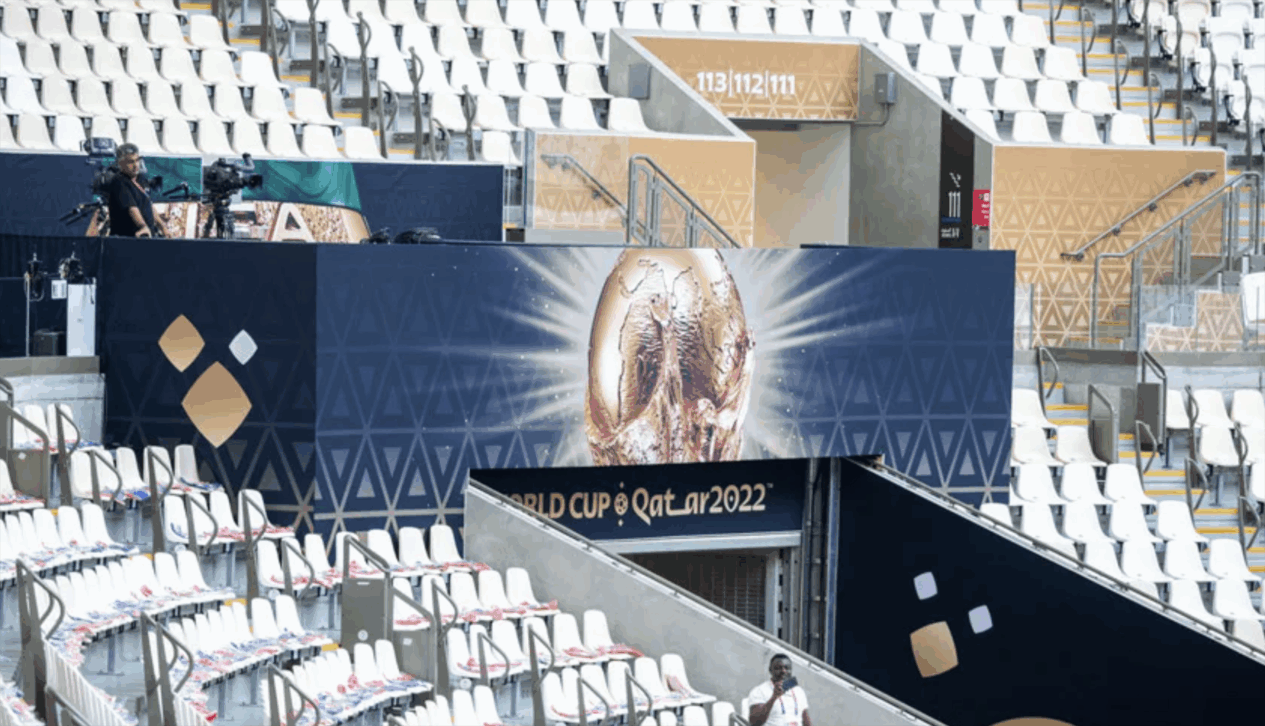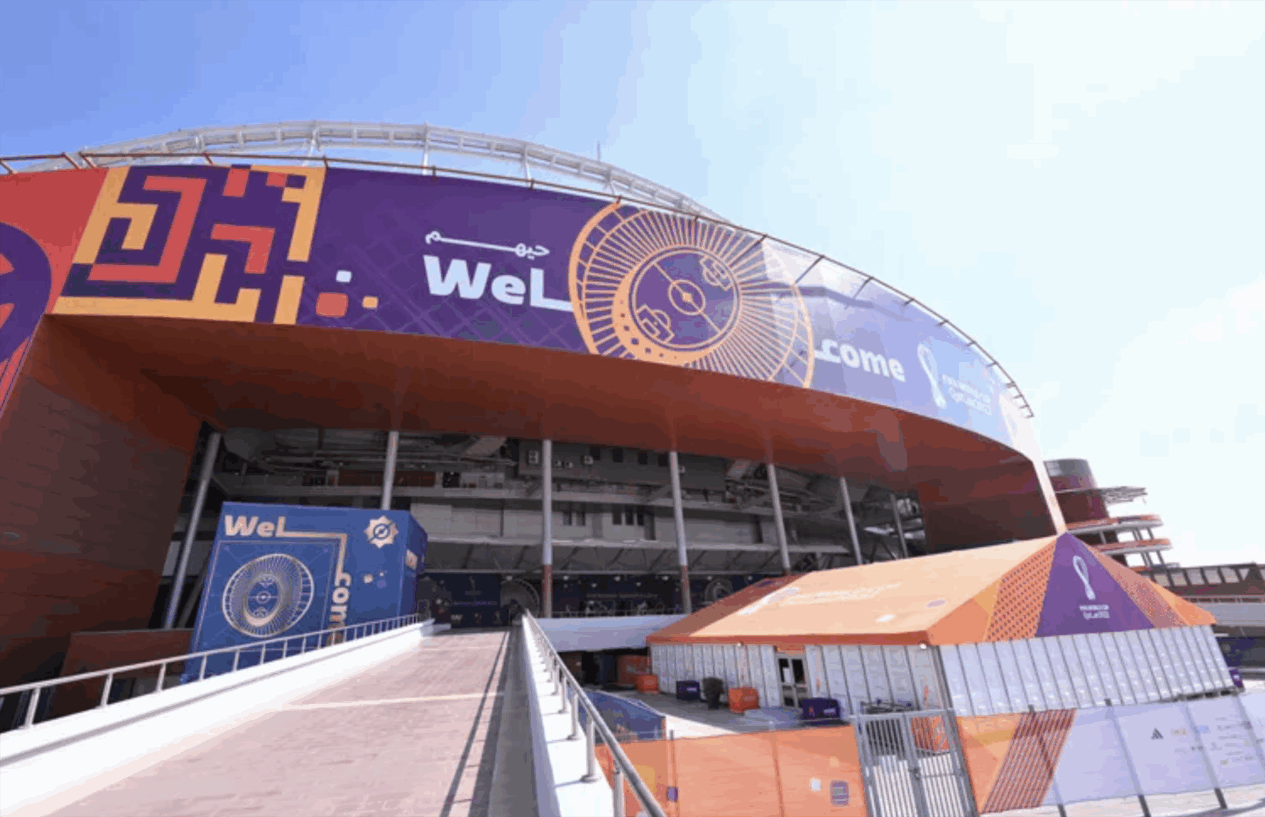
Soft signage and graphic textile displays have been a major driver of digital textile printing technologies since their inception some 25 years ago. As technical innovations move forward to increase print speeds, print quality and printable widths, the sector is maximising the benefits and the commercial growth that the textile marketplace offers.
The digital textile soft signage market has grown exponentially over the last ten years and continues to drive the digital textile agenda as recent analytics confirm. The progress is reflected in the numbers, for out of a global printed signage market predicted to be worth USD $41.39 billion by 2027 (Mordor Intelligence) the digitally printed component is predicted to rise from 56.73 % in 2022 to a staggering 86.74% by 2027 (Research & Markets).
Digitally printed textiles are used by example for: building wraps, interior wall graphics, stretch ceilings, retail interiors, trade window décor, TV & theatre backdrops, trade show displays, retail/event upholstery, feather flags, café barriers, flooring mats, carpets and backlit displays and large-scale event décor such as FIFA 2022.
This staggering growth in market share has been brought about by the speed, scale, and quality of digital textile print. Synthetic textile displays are efficient and easy to assemble, offer good UV and water resistance as well as being scratch resistant and durable. They offer an affordable, speedy and effective alternative to traditional trade and advertising displays.
Across the sector from entry level to full scale-industrial digital textile print technologies remain in a state of continuous development to meet this seismic and continuous shift in demand.
Global printed signage market predicted to be worth USD $41.39 billion by 2027 (Mordor Intelligence) the digitally printed component is predicted to rise from 56.73 % in 2022 to a staggering 86.74% by 2027 (Research & Markets).
Image Credit: The Look Company

Industrial Scale Print Technologies:
For industrial large-scale print machinery, the pace of development, whether in software, inks, systems or printable speed has been astonishing.
An example of this advancement is the EFI VUTEk range of machinery in which the FabriVU 340i prints at 400 m2/hr while the EFI VUTEk Q5r delivers up to 670 m2/hr at 5.3 metres wide. One major advantage of the VUTEk 340i + is the ability to print direct to substrate, allowing for an increase in colour depth and vibrancy, enhancing the quality of print output. This printer is perfect for use with all textile materials including backlit, front lit, blackback and flag. As a versatile machine, it can handle both direct transfer and paper sublimation processes, while the presence of an inline fixation unit negates the need for a separate heat press – saving time, money and floor space.
Similarly, Agfa has also developed a range of state-of-the-art textile display printers. One of the UK’s largest fabric printers, Northern Flags has invested in three Avinci fabric-printing engines, an Anapurna roll-to-roll sign & display printer and an Asanti workflow solution for their Leeds facility. Each Agfa printer offers different strengths and having both machines give Northern Flags the flexibility to decide which job and which fabric should go on which press.
At Epson, the SureColor SC-V7000, Epson’s first UV large format printer, allows sign and display makers to expand their portfolio of products. It offers exceptional image quality and the flexibility to print on a wide range of media. It was developed for printing eye-catching retail and outdoor signage, window displays, hoarding panels, packaging, promotional goods, and décor products. It features Epson’s unique UltraChrome UV ink configuration, including red, grey, white and varnish.
Finally, the swissQprint Kudu represents a step change in productivity, being capable of producing at over 340 m2/hr, in either roll to roll or flatbed mode. Recently installed at MediaCo in Manchester who selected the Kudu after an extensive review, specifying their machine with 10 colour channels including white, varnish and neon yellow and pink together with a CMYKLcLm ink setup. In addition, the roll to roll and dual roll options mean that films, banner, mesh and other roll stock up to 180kg, are easily handled, as are boards and sheet materials.
For industrial large-scale print machinery, the pace of development, whether in software, inks, systems or printable speed has been astonishing.
Image Credit: The Look Company

Entry-Level Technologies:
Beyond the large machines focussed on the larger printing enterprises, the textile soft signage market features a very strong entry level segment. Here small micro-businesses can afford to buy machinery and compete against the big boys, providing a turn of speed, local manufacture and a personalised service that the competition can’t match.
In direct dye sublimation digital printing, UV digital printing and direct pigment digital printing, small and affordable printing machines abound. With a typical footprint of 6 square metres, and a cost of only a moderate family saloon car, the ease of entry is absolute, and many micro-enterprises can be found that benefit from this and provide a welcome alternative both in terms of cost and service.
In this sector there is a wide choice of machinery from industry stalwarts such as HP, Mutoh, Epson and Mimaki.
A good example of this entry level product is the HP S300 dye sublimation machine, which, at a cost of about $15,000 is ideal for polyester flag fabrics, printing direct to fabric at speeds of up to 60 m2/hr at up to 64 inches wide.
Beyond the large machines focussed on the larger printing enterprises, the textile soft signage market features a very strong entry level segment.
Image Credit: The Look Company

Unsurprisingly, with machine offers such as this, the entry-level textile signage sector is booming, taking advantage of the high speeds and wide prints available to combine them with the low overheads and variable costs of the micro-producer.
As the textile soft signage sector continues to develop, its is underwritten by the wide based support of the manufacturing community. From industrial scale to entry level, the range of printing plant equipment available is broad and all-encompassing, reflecting the significance of the textile soft signage sector to the digital print machine community, which continues to present faster and wider machinery to satisfy the vibrant demand from across the segment.